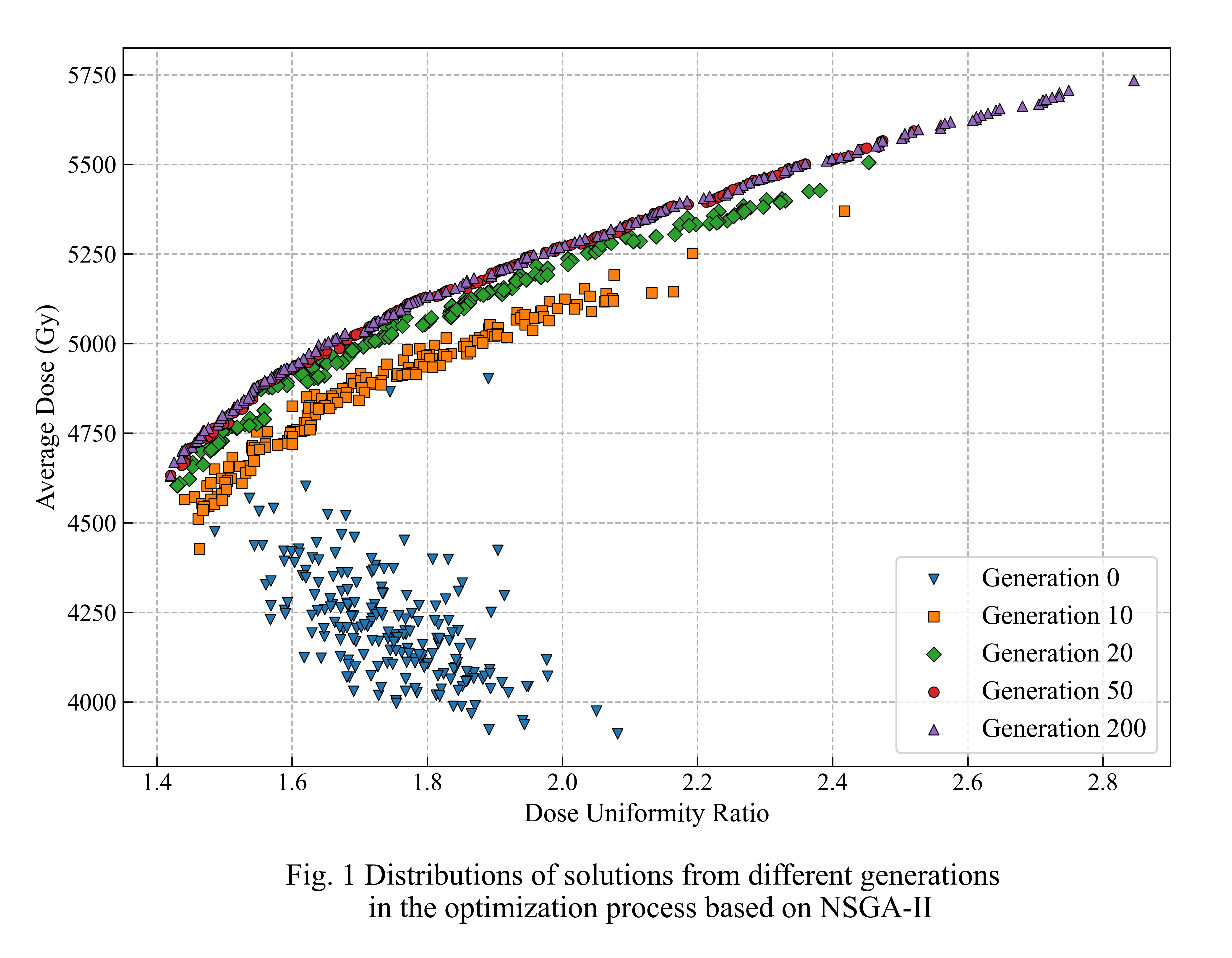Source pencils loading scheme optimization using multi-objective genetic algorithm and its application cloud service
Juntao Liu1,2,3, Shan Jiang1,2,3, Tianquan Wang4, Siguang Wang5, Jie Chang1,2, Tianguang Liu1,2,3, Fei Gao6, Yuntao Liu6, Zhiyi Liu1,2,3.
1Frontiers Science Center for Rare Isotopes, Lanzhou University, Lanzhou City, P.R. China; 2Gansu Nuclear Innovations Institute, Lanzhou City, P.R. China; 3School of Nuclear Science and Technology, Lanzhou University, Lanzhou City, P.R. China; 4Department of Nuclear Medicine, Sun Yat-Sen University Cancer Center, Guangzhou City, P.R. China; 5School of Physics, Peking University, Beijing, P.R. China; 6National Key Laboratory for Metrology and Calibration Techniques, China Institute of Atomic Energy, Beijing, P.R. China
The arrangement strategy of radioactive source pencils directly determines the distribution of the gamma radiation field, which affects quality of the energy deposit in the irradiated products. Therefore, an optimized source pencils loading scheme may significantly reduce the dose uniformity ratio and raise the energy utilization efficiency of radioactive pencils, and commercially enhance the profits of irradiators.
Technically, the optimization of loading scheme is a typical combinatorial optimization problem. In the problem, the objectives are various, such as minimizing the dose uniformity ratio, maximizing the energy utilization, and minimizing the workload for re-ranging the pencils.
Currently most irradiation plants rely on accumulated experience to develop a loading scheme. However, such an approach cannot cope with complex demands from commercial gamma irradiators. So, we proposed to optimize the loading scheme using genetic algorithms[1]. Scenarios of single and multiple objectives can be addressed by simple genetic algorithm and fast non-dominated sorting genetic algorithm (NSGA-II), respectively.
In a practical example, we optimized the loading scheme of the newly added 12 pencils (average activity of 10520 Ci) given the existing 34 pencils (total activity of 113851 Ci) fixed. Fig. 1 illustrates that the initial random schemes (generation 0) has been notably boosted on both objectives.

Based on the optimization method, we have developed a Web-based platform. The platform not only implements functions of loading scheme optimization but also provides intense computing services on dose field simulation with Monte Carlo tools to validate optimization results.

[1] S. Jiang, et al. Radiat. Phys. Chem. 207 (2023): 110839.